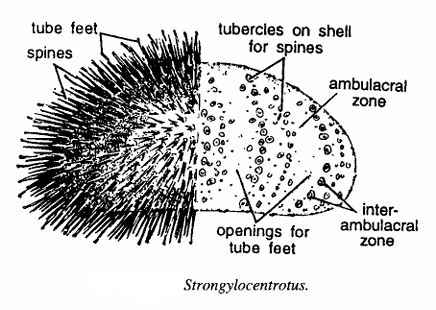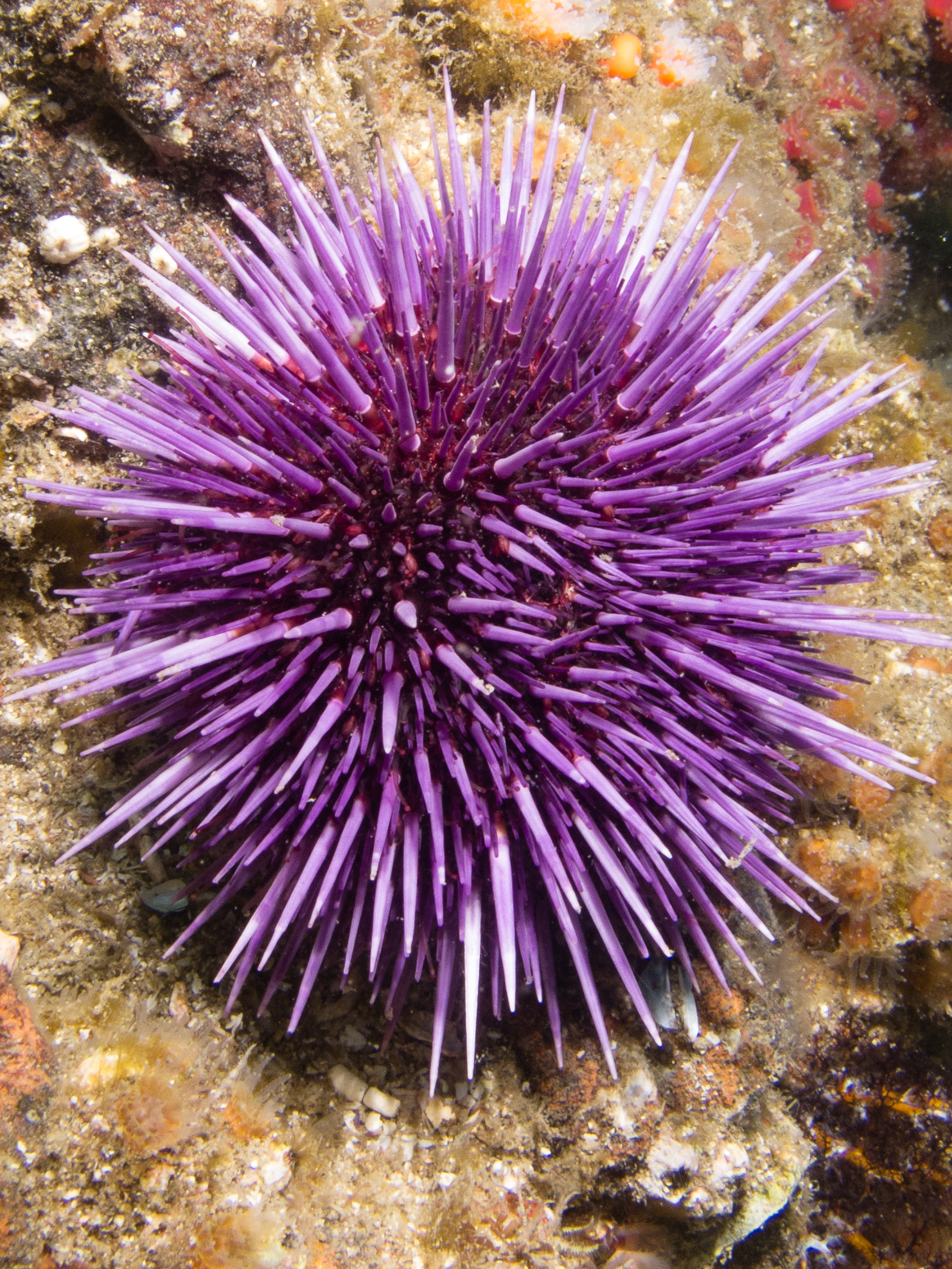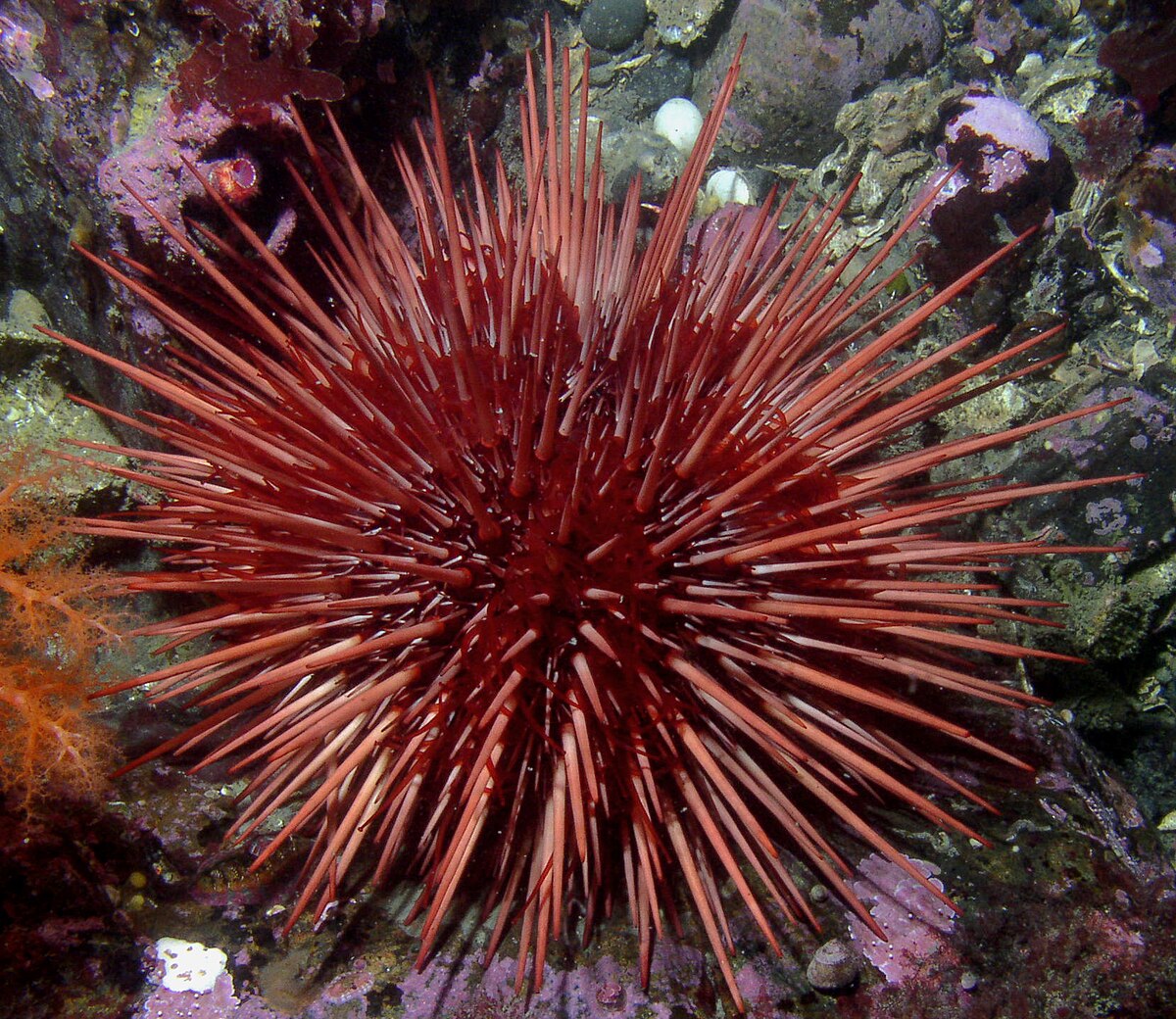Strongylocentrotus: A Detailed Overview of the Purple and Green Sea Urchins
Strongylocentrotus is a genus of sea urchins from the family Strongylocentrotidae, notable for their spiny globular bodies and ecological significance in coastal marine ecosystems. The genus includes several species such as S. purpuratus (purple sea urchin) and S. droebachiensis (green sea urchin), both of which are widely studied due to their roles in kelp forest dynamics, marine food webs, and as model organisms in research. Adult species are characterized by their hard tests (shells), articulated spines, and specialized feeding apparatus known as Aristotle’s lantern.
Classification of Strongylocentrotus
| Taxonomic Rank | Name | Characteristic |
|---|---|---|
| Kingdom | Animalia | Multicellular, heterotrophic marine organisms |
| Phylum | Echinodermata | Marine animals with radial symmetry and calcareous skeletons |
| Class | Echinoidea | Sea urchins with spiny tests and tube feet |
| Order | Echinoida | Sea urchins with lantern-like jaw structures |
| Family | Strongylocentrotidae | Sea urchins with articulated spines and complex mouthparts |
| Genus | Strongylocentrotus | Globular sea urchins with prominent spines |

Habitat and Habit
Strongylocentrotus species primarily inhabit rocky subtidal and intertidal zones along temperate coastal waters. They are commonly found in kelp forests, where they play a critical role as grazers of kelp and algae, profoundly influencing forest dynamics. For example, S. purpuratus is widely distributed from Baja California to British Columbia and is abundant in Pacific kelp ecosystems.
These urchins are slow-moving, using their tube feet and spines for locomotion. They graze on algal mats and encrusting organisms and are known for their Aristotle’s lantern jaw mechanism that efficiently scrapes algae from surfaces. They also contribute to bioerosion by grazing on rocky substrates.
Geographical Distribution
The genus has a primarily North Pacific distribution. Species like S.purpuratus (purple sea urchin) occupy the Pacific coastline stretching from Mexico to Canada. Strongylocentrotus droebachiensis (green sea urchin) is found in colder northern waters, including the North Atlantic and Arctic Oceans.

General Characteristics
- Commonly called as Sea urchin.
- Body is rounded and contains large tubercles for thick spines.
- Test is differentiated into oral and aboral surfaces.
- Oral surface has a central mouth through which teeth of jaw apparatus (Aristotle’s lantern) project.
- Mouth is surrounded by peristomial membrane. Aboral surface is composed of calcareous plates.
- It is differentiated into ambulacral and inter-ambulacral zones.
- Ambulacral grooves are absent.
- Several tube feet are seen in ambulacral zone. Test contains openings for tube feet in ambulacral zone.
- Anus is aboral. Gemmiform pedicellariae are rounded and without teeth.
- Gills and sphaeridia are present. Development includes echinopluteus larva.
- Shape: Globular or hemispherical test covered with movable spines.
- Spines: Range widely in length and color depending on species, from long and purple (S. purpuratus) to shorter and green (S. droebachiensis).
- Mouth: Contains Aristotle’s lantern, a complex jaw system with five calcareous teeth used for grazing.
- Tube Feet: Numerous tube feet extend through ambulacral plates, aiding locomotion, respiration, and food handling.
- Size: Adult diameter varies, with S. purpuratus reaching 5-10 cm and S. droebachiensis up to 8 cm.
Special Features
Strongylocentrotus exhibits remarkable regenerative capabilities, able to regrow lost spines and damaged test areas. The species have extensive pedicellariae—small pincer-like appendages for defense and surface cleaning.
Additionally, Strongylocentrotus purpuratus was the first echinoderm to have its genome sequenced, revealing insights into developmental biology, immunity, and regeneration. Its role in kelp forest ecology also highlights its importance as an ecosystem engineer whose population dynamics influence community structure.

Behavior and Ecology
These sea urchins feed primarily as grazers on macroalgae and biofilms. Their grazing pressure can lead to urchin barrens—areas where kelp is overgrazed, resulting in reduced biodiversity and altered habitat structure. They are preyed upon by sea otters, fish, and other marine animals, forming an integral part of the marine food web.
Reproductive cycles are seasonal, featuring external fertilization. Larvae are planktonic before settling and metamorphosing. Strongylocentrotus urchins contribute to nutrient cycling through their feeding and bioerosion activities on rocky substrates.
References
- https://en.wikipedia.org/wiki/Strongylocentrotus
- https://en.wikipedia.org/wiki/Strongylocentrotus_purpuratus
- https://animaldiversity.org/accounts/Strongylocentrotus/classification/
- http://www.marinespecies.org/aphia.php?p=taxdetails&id=240747
- https://www.habitas.org.uk/marinelife/species.asp?item=ZB3810
- https://marine.ucsc.edu/target/strongylocentrotus/
- https://genomics.senescence.info/species/entry.php?species=Strongylocentrotus_purpuratus
- https://animaldiversity.org/accounts/Strongylocentrotus_droebachiensis/
- https://www.sealifebase.se/summary/Strongylocentrotus-droebachiensis.html
- https://pmc.ncbi.nlm.nih.gov/articles/PMC6406795/

